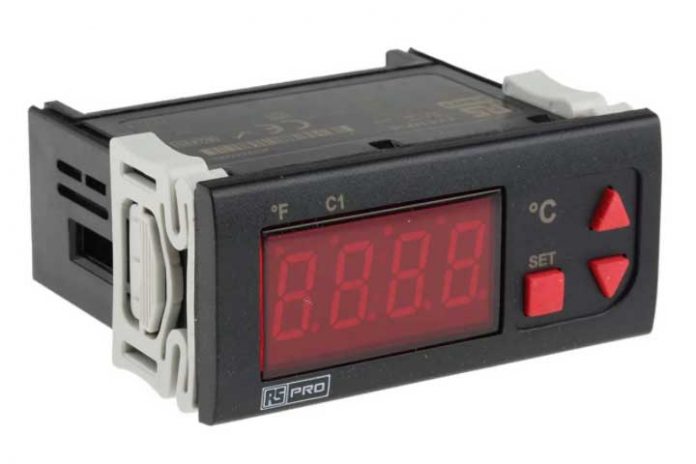There are certain processes, products and environments in many different fields where it is essential to regulate or control the temperature within fairly close limits to avoid the process or product being processed being spoilt.
A temperature controller is one such instrument that is used to monitor the thermal conditions and control and sustain the temperature within the target temperature.
How does a Temperature Controller work?
The temperature controller works by taking inputs from a temperature sensor and then comparing it to the optimum temperature which has been set for the process. The difference between the process temperature and the desired temperature determines how much heating or cooling is required to bring the temperature back to the desired value.
If there is a difference in the temperatures, the temperature controller will produce an output signal that effects the change required. This output signal is connected to a heater, control valve, or fan that adds or removes heat from the process.
Common uses of Temperature Controllers
Temperature controllers are found in hot water heaters, ovens and refrigerators. In a water heater, a thermostat regulates the temperature of the water and keeps it at a certain temperature. In ovens, a controller monitors the temperature inside of the oven by raising it once it drops below. Thermostats in refrigerators control the temperature if it gets too high or low.
Types of Temperature Controllers
There are three basic types of temperature controllers. You can choose the right temperature controller depending on the system or application.
On/off temperature controller: One of the most basic temperature controller, the on/off controller uses a control method where the output is turned on and off based on the set point in order to keep the temperature constant. The regulator output is either on or off and is also called the two-position control. Conventional home heating thermostats work on this principle.
Proportional temperature controller: Proportional temperature control uses a cycle time to proportion the output value. Here, the average power delivered to the equipment decreases when the temperature approaches the setpoint. The temperature control is smoother than the on/off controller due to the fact that the output is gradually changed when it approaches the setpoint, maintaining a stable temperature.
PID temperature controller: This temperature controller offers a combination of proportional with integral and derivative control which helps the unit automatically compensate for changes in the system. For high-accuracy temperature control, a PID temperature controller is used.
Peltier module controller: Peltier module controllers are temperature controllers designed for reversible cooling and heating control of thermoelectric assemblies. These controllers work as per the Peltier effect which creates a temperature difference by transferring heat between two electrical junctions. As these controllers offer a fast and compact temperature control solution, they are ideal for applications that need precise and accurate temperature control.
Temperature controllers are used to minimising the temperature to over-shoot and avoid frequent temperature oscillations. With the vast array of temperature controllers available today, selecting the most suitable temperature controller for your specific application can be difficult. Choosing the right temperature controller for an application boosts efficiency and minimises downtime.
Also Read: How To Find The Right Communication Tool


